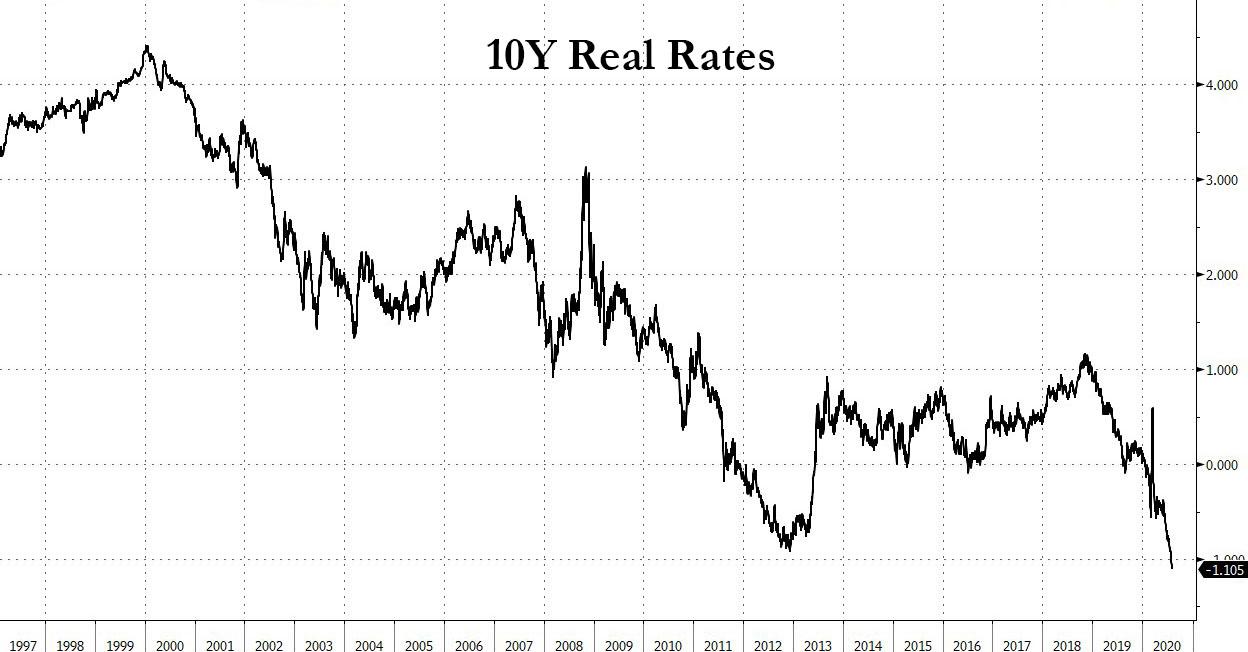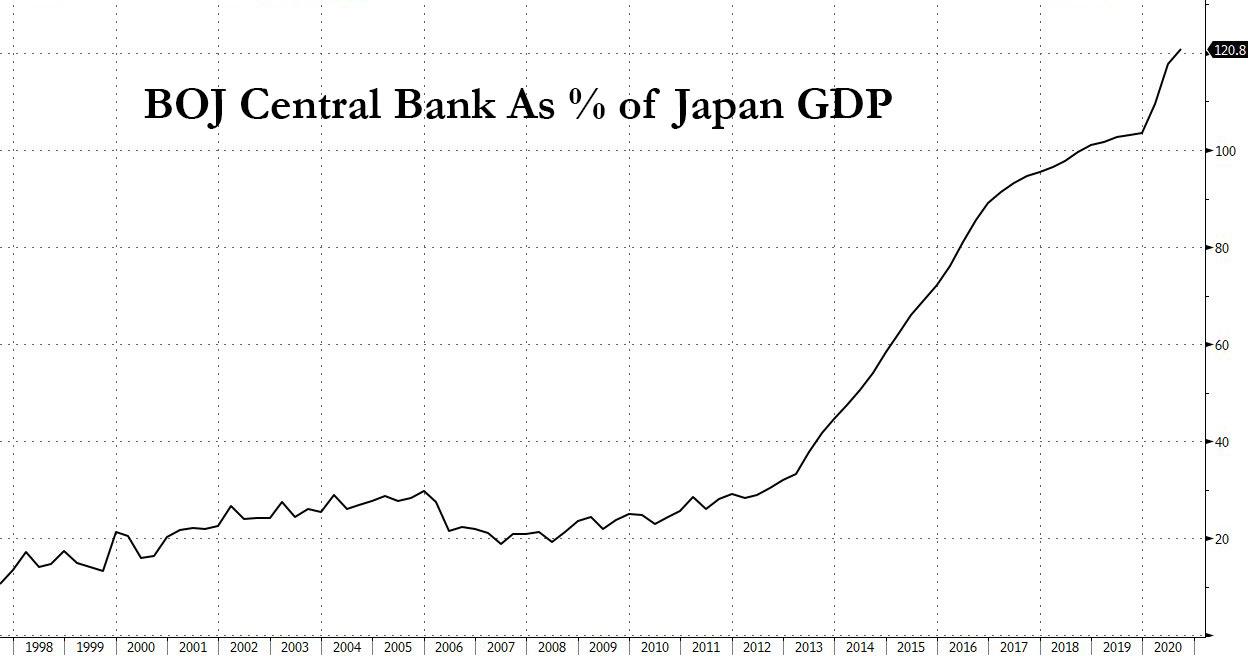The Open Trap Door Under Real Yields Rings Many Alarms
Tyler Durden
Thu, 08/06/2020 – 11:45
By Laura Cooper, market strategist at Bloomberg
With no imminent end to collapsing real yields – which just hit a new record low -1.10%, the side effects of financial repression warn of stagflation, asset bubbles and policy impotence. Fresh lows for U.S. 10-year real yields this week show a trap door opened by growing economic angst, climbing inflation expectations and an indefinite pause in monetary policy.
The Fed’s explicit guidance that rates will stay near zero for the foreseeable future has markets pricing a hold until at least 2023, effectively killing price discovery.
When it comes to bond purchases, the central bank will likely have to skew buying to the longer-end to aid the recovery. That, combined with the search for yield, risks pushing yields on the entire U.S. curve below 1%, a threshold breached only briefly in March.
Not even the record-shattering supply announced on Wednesday is likely to lift yields, with insatiable appetite for safety and the seeds of debt monetization planted.
Meanwhile, inflation expectations have room to rise, with U.S. 10-year breakevens about 20bps shy of the 2020 peak. They could get a boost should questions ring louder over the Fed relaxing its inflation mandate, which has been in place since January 2012.
Fed Chairman Powell alluded to tweaking the price-stability mandate in the forthcoming policy review, while member Brainard coined the “opportunistic reflation” strategy to explicitly welcome an inflation overshoot. Such a stance would be a material departure for the Fed, given policy lags of at least one year.
Should markets believe the Fed will do what it takes for inflation to go beyond 2% in pursuit of full employment, then in theory 10-year U.S. real yields could tumble 40bps-50bps more from roughly -1.07% currently. That’s assuming nominal yields remain range-bound, and would be well below the estimated real neutral rate
That opens the door to risks such as stagflation — a more plausible scenario now given the unique combination of unprecedented monetary and fiscal stimulus; a deglobalization trend that’s creating supply constraints; and elevated unemployment that’s quashing hopefor a quick economic recovery.
The tumble in real yields is also amplifying the bifurcation between the real economy and financial assets. While market-based inflation measures ramp up, firms that lack pricing power and absent wage negotiations are keeping alive the risks of a deflationary spiral.
The Bank of Japan offers a cautionary tale on the pitfalls of revising inflation mandates, which it did in January 2013 to combat chronic deflation. A more than trebling of its balance sheet, negative rates, forward guidance and ETF purchases failed to spur price growth.
The Fed itself examined the Japan experience in a study earlier this year. Lessons include that the central bank faces the risk of getting caught in “never-ending monetary accommodation even when real economic activity is strong or when financial stability risks accumulate.”
To be sure, the widespread decline in real yields has been in place for decades and has been driven by structural factors such as a demographic-driven propensity to save and the integration of Chinese investors into global financial markets. Yet this time around, financial repression has taken over real yields and further declines would only amplify the many risks ahead.

